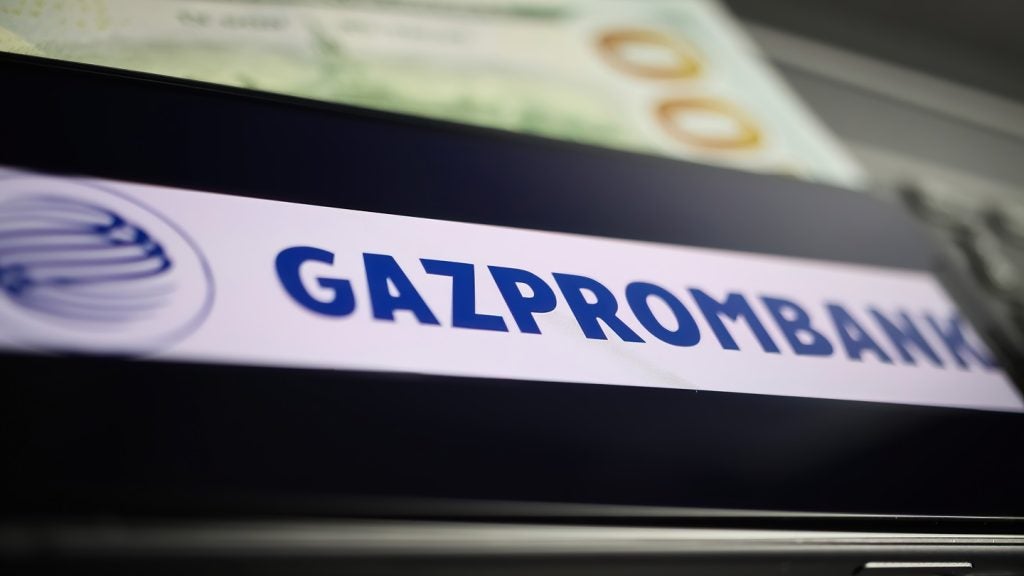The growth of mobile payments looks set to create
significant changes across the payments landscape and change the
way consumers interact with banks. Nick Senechal, head of product
development at VocaLink, discusses the key challenges still facing
banks in enabling mobile payments to hit the
mainstream.
How well do you really know your competitors?
Access the most comprehensive Company Profiles on the market, powered by GlobalData. Save hours of research. Gain competitive edge.

Thank you!
Your download email will arrive shortly
Not ready to buy yet? Download a free sample
We are confident about the unique quality of our Company Profiles. However, we want you to make the most beneficial decision for your business, so we offer a free sample that you can download by submitting the below form
By GlobalData There have been significant changes within the payments
There have been significant changes within the payments
industry over the past couple of years, not least the introduction
of the UK’s Faster Payments Service (FPS) and the slow but steady
decline of the cheque.
The mobile phone as a new payments
channel has also experienced a rise in popularity. As banks look to
provide their customers with innovative new services, drive ROI and
build brand reputation, support for this service is gaining
momentum among UK financial institutions and forward-thinking
banks, such as Barclays, are already rolling out this new
technology.
By 2013, UK sales made through the
mobile phone should reach £275m ($421m), according to analyst house
Ovum. These figures show the appetite for mobile payments in the UK
and the opportunity for banks to capitalise on this new market.
Alongside this demand for mobile
payments, the real-time infrastructure for mobile services has also
now been made available through the introduction of the FPS in
2008. The immediacy of mobile transactions will be key to adoption,
since any mobile service brings with it the expectation that once a
button is pressed the service will be delivered instantaneously.
Consequently, the FPS has provided a platform through which mobile
payments can be technically realised.
Secondly, the declining use of the
cheque means that banks are considering alternative payment
methods. The UK Payments Council stated this year that cheques
accounted for only 2% of personal transactions in 2009 and that,
even without intervention, the volume of cheques will more than
halve to just 248m in 2018, making up just 0.8% of all personal
payments.
As a result, the industry is
looking to introduce an alternative payment channel by 2014 and
mobile payments are currently seen as one of the most viable
options given the ubiquity of the technology.
Thirdly, mobile operators
themselves see great potential in mobile payments and handsets have
been developed to the point where they are secure and agile enough
to host payments technology.
Finally, banks see mobile payments
as an opportunity to offer their customers an innovative and
easy-to-use payments solution which corresponds with the typical
lifestyle of today’s customer.
Not yet
mainstream?
So, why have mobile payments yet to hit the mainstream? The
answer to this question lies in the fact that a number of key
challenges are yet to be overcome before widespread roll-out can
take place. For example, in markets, such as the UK, the mobile
channel will have to compete with several highly established
payment vehicles including ATMs and the internet, as well as the
actual bank branch itself.
Since customers already benefit
from this diverse range of secure services, the mobile channel will
need to offer something different whilst also remaining secure.
Security is one of the key challenges to deployment and the
roll-out of mobile payments is comparable to the implementation of
chip and PIN technology in terms of the required security
standards.
In addition, mobile payment
services must meet a raft of regulations such as the Office of
Foreign Asset Control rules and data security standards such as the
Payment Card Industry Data Security Standard.
Banks will also need the right
payment infrastructure in place. For example, the Link
infrastructure, which would enable low value mobile payments, is
already used across the UK’s ATM network.
However, this is limiting for both
banks and consumers as transactions are usually capped at £250.
Consequently, the roll-out of mobile payments for higher value
transactions relies on the Faster Payments infrastructure-however
not all banks are signed up to Faster Payments.
The relative expense of the
implementation of a mobile payments service is largely due to how
much or little banks can reuse existing architecture and connection
points.
Conversely, some banks may decide
to build their own mobile channel and connection.
While banks may then be able to
recoup the expense through selling the service onto other providers
and charging a set fee per transaction, mobile transactions are
likely to become quite cost competitive and developing the
infrastructure in-house may not be a sustainable solution in the
long-term.
Finally, a significant concern for
banks is that they remain in control of their customers’
payments.
Again, the Faster Payments or even
the Link network will play a key role in allaying banks’ fears as
they are both bank owned.
Success of mobile payments largely
depends on the ability to use FPS for the universal reach which
this platform enables.
In order for mobile payments to
progress to the next stage, the telecoms and financial services
industry will need to foster greater collaboration.
At the same time, significant
progress is also being made with regard to the further development
of contactless Near Field Communication-based payments using the
mobile phone. To this end, the EPC is cooperating with the global
mobile network operators represented by the GSMA.
While the challenges to making mobile payments a reality still
exist, it is clearly an area of significant growth for both banks
and mobile operators in the years to come.








